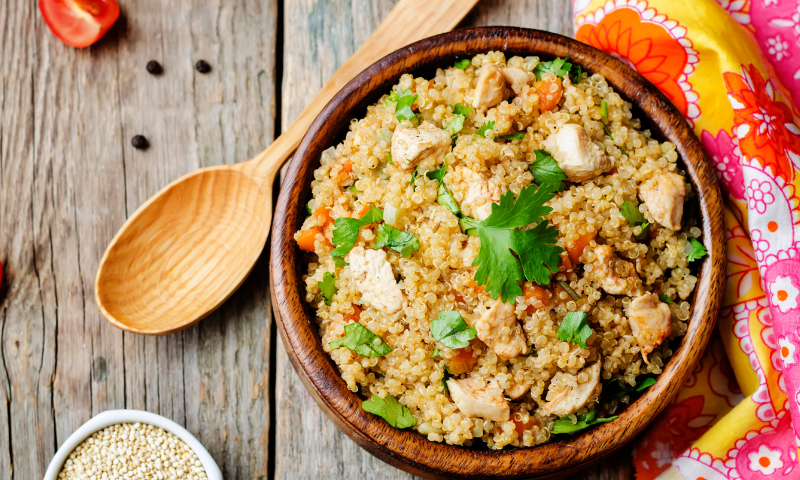Grains often get a bad reputation, but whole grain foods are good choices for a nutritious diet. Whole grain pasta, bread and brown rice can make healthy additions to meals and snacks, but so many Americans are cutting carbohydrates out of their diet or eating low-carb meal plans. When this happens, grains often get eliminated altogether. Is cutting out grains necessary? Should they have a place in your nutrition plan?
Are Grains Good For You?
Despite what some of the new and trendy diet plans claim, your body needs grains for so many reasons. First, grains provide a variety of nutrients like thiamine, riboflavin, niacin and folate. They are also carbohydrates, which are your body’s main source of energy. Each gram of carbohydrate has four calories, which your body uses for fuel. Grains are also a great source of fiber, which can help prevent constipation, reduce the risk of developing cardiovascular disease and improve long-term satiety (fullness).
Different Types of Grains
There are many different types of grains, and they aren’t all created equal. What is the difference between a pastry and a piece of whole grain toast? First, remember some “grains” have added sugar. Sweetened cereals, pastries and cookies are technically grains, but they have added sugar and therefore more calories. There is also a difference between white bread and whole grain bread. White bread lacks fiber and nutrients such as vitamin B6 and folic acid, whereas whole grain bread does not. Strive to eat more whole grain pasta, brown rice and quinoa instead of white pasta, white rice and processed foods.
How Much Should I Eat?
Whole grains can bring a lot of value to your diet in moderation. Remember, they aren’t calorie-free. Calories in grains can add up quickly if you aren’t conscious of portion sizes. Start by filling one-fourth of your plate with whole grains and the rest with protein and produce. Carbs tend to be many people’s favorite food, so they’re easy to overdo — especially when you add in seasonings, butter, cheese and sauces. Watching your portion sizes and other added ingredients can help you incorporate grains into a nutritious and balanced diet.
Whole Grain Meal and Snack Ideas
Not sure how to add grains to your diet? Try the ideas below.
- Whole grain toast and peanut butter
- Veggie stir fry with brown rice
- Quinoa salad
- Whole grain pasta with meat sauce
- Whole grain crackers and hummus
- Whole grain deli sandwich with soup or salad
Linguini and Shrimp Fra Diavolo
Source: SkinnyTaste.com
Ingredients:
- 12 ounces linguini, spaghetti or pasta of choice, wheat or gluten-free
- Kosher salt and fresh pepper to taste
- 3 teaspoons extra virgin olive oil
- 1 ½ pounds jumbo shrimp, peeled and deveined
- 6-7 cloves garlic, peeled and smashed
- ¼ cup celery
- ½ cup chopped onion
- 35 ounces crushed tomatoes
- 1 ½ teaspoons crushed red pepper, to taste
- One tablespoon capers, drained
- 8 fresh basil leaves, rolled and sliced thin
Directions:
Bring a large pot of salted water to a boil.
While the water is heating up, heat 2 teaspoons of olive oil in a large heavy skillet over medium heat.
Stir in the garlic and cook until golden, about one minute. Add the shrimp and cook for 2-3 minutes to brown but not cook through; sprinkle with salt to taste.
Transfer the shrimp to a plate, leaving garlic in the pan.
Pour in the remaining teaspoon of olive oil and add the celery and onions; cook 2 minutes then add the crushed tomatoes, season with salt and crushed red pepper, and bring to a simmer.
Lower the heat and let it simmer for about 8-10 minutes.
Meanwhile, add pasta to water and cook according to package directions for al dente.
Once the sauce is ready, add the shrimp and cook another minute or two; remove from heat and add the capers.
Serve in a large bowl over pasta topped with fresh basil and fresh black pepper. Optional, Parmesan cheese on the side.






